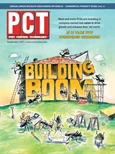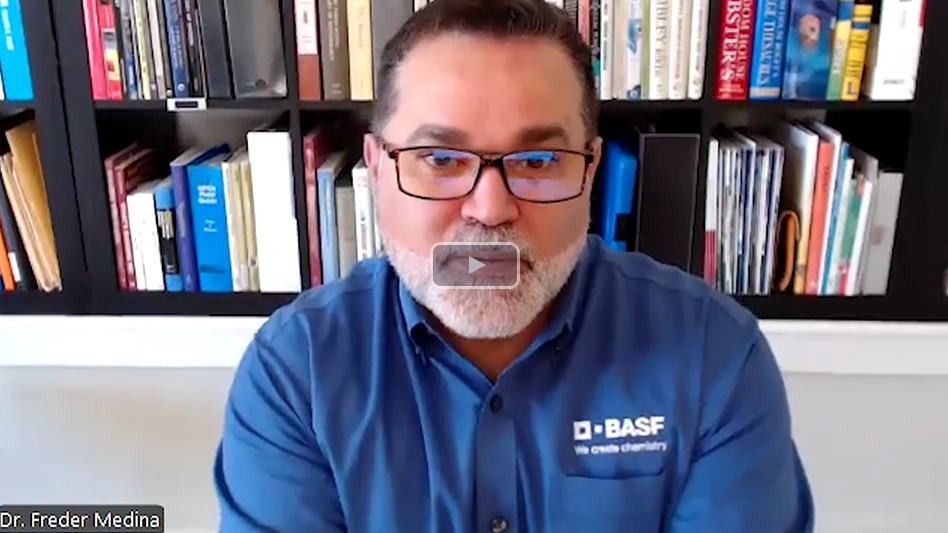Most lines of work unfortunately have aspects that expose the worst in the human condition, and pest control is no different. Probably more so than most, in fact. Last June, a particularly memorable entry was posted on the PCT online message board by one of our colleagues who took a nighttime call from the local 911 operator — would he be willing to go get a snake out of a lady’s attic? Rising to the occasion, he rushed to the address and found that the 5-foot black rat snake had already been shot three times by the man of the house. The serpent was still alive but badly wounded, and it was clear there was no hope for recovery. After removing it from the attic and charging a fair price for his services, the professional made the correct decision to euthanize it on the spot.
The story has all the usual elements one associates with rat snakes and people. The encounter is often indoors, or at least no more than a stone’s throw away. Speaking of which, weapons are commonly employed: guns are drawn, shovels are wielded, cars are turned into instruments of destruction. And, invariably, the presence of the snake is regarded by terrified idiots as a life-threatening emergency. I have, engraved in my brain, the vivid picture of two uniformed security officers in a basement locker room of a government building in Washington, D.C., perched like little girls on top of a bench and aiming their semi-automatics at a baby rat snake that was, oh, maybe a foot long.
What makes supposedly civilized people behave like this? Elaphe obsoleta is one of the most impressive — and harmless — members of our urban wildlife community, and it deserves far better from us than fear, loathing and mindless extermination. As members of a profession that is often called upon (when the police or fire departments are busy elsewhere) to resolve black rat snake issues, we are in a unique position to educate the public about this distinctive animal and tell the shovel-wielders what they need to hear. More on that later.
BIOLOGY BASICS. Found throughout the eastern two-thirds of the United States and into southern Ontario, the black rat snake is the largest serpent over most of its range, and by far the largest snake common to urban areas. Maxing out at more than 8 feet and shiny black in color, it has what it takes to startle even the most ardent nature lover. For everybody else, the mantra that should be repeated during a close encounter is “non-venomous.” Rat snakes are constrictors, subduing their prey by encircling them with coils and squeezing until the victim suffocates. Anything larger than a squirrel is pretty much safe, unless you figure in the mental trauma they produce when discovered in an attic. Or a locker room.
One additional wrinkle about the species that partially explains the officers’ panic in that sorry episode is that juvenile rat snakes are marked with a pattern of brown blotches on a pale grey background (see Figure 2, right). This apparently screams out “COPPERHEAD!” to many folks, and I suppose there is a vague similarity. Or not. To tell the truth, I’ve never really understood how guys who, in the blink of an eye, are able to correctly identify the make, model, and often the year of any given automobile, can nevertheless be so clueless when it comes to telling a real copperhead from a fake one. Or why an animal that strikes back when it’s being pestered — as rat snakes of all ages will certainly do — is considered “aggressive.”
But I digress. Like many other animals that have easily adapted to the urban environment, black rat snakes are found along the edges of a broad range of natural habitats, from mountainous terrain to fields, marshes and woodlots. Their food range is similarly eclectic: small mammals, birds and eggs, lizards and frogs. The snake’s name originated from the observations of colonial farmers, who recognized and appreciated the rodent control services they provided out in the barn. Where suitable cavities are available, rat snakes often overwinter in communal dens with other snake species. Mating occurs in the spring and a clutch of eggs (from just a few to more than a dozen) are laid in a protected spot, often in a communal nest used by other females. Hatching takes place about two months later in late summer and fall. A freshly emerged baby, ready to strike fear into the hearts of strong men, measures about a foot.
A MASTER CLIMBER. Two aspects of black rat snake biology deserve a closer look. The first is its undisputed status as serpent most likely to be found in a building. Sure, several other species can turn up in the basement, but when have you ever heard of a copperhead in the rafters? Unlike virtually any other common urban snake in this country, the black rat snake is an extraordinary aerialist. The characteristic of being found in a structure above ground level is, by itself, essentially diagnostic for this species throughout its range.
One of the more remarkable displays of this snake’s gymnastic talents that I’ve seen was a seven footer negotiating a clothesline. The snake was able to anchor and support itself with less than half its body in contact with the cord — an impressive feat of strength. I was amazed that the creature could navigate so smoothly while appearing to be almost casually draped on the line.
One big advantage of this skill is that, although black rat snakes primarily feed on mammals, they are fully able to take advantage of the seasonal availability of eggs and nestling birds. In addition to clotheslines, their arboreal repertoire includes climbing straight up the trunks of mature trees without the aid of branches. Among ornithologists, they are famous for their depredations on the endangered red-cockaded woodpecker, which makes its nest holes in live pines; the birds often successfully ward off the snakes by pecking holes in the tree bark to produce a protective barrier of sticky resin.
Once a black rat snake is up in a tree canopy, it may hang out for extended periods of time, enduring the heckling of birds and frequently curling up in cavities for shelter. So it’s really not much of a stretch to use buildings in the same manner.
SIZE MATTERS. The second notable aspect of these snakes is their adult size, so out of scale from what most city dwellers in this country are familiar with. In some ways, it’s good to be big — you can take larger prey and live up to your common name, and if you’re a male black rat snake, you’ll have a definite combat and mating advantage over smaller individuals. But there are important downsides as well. A larger size makes these snakes more noticeable to both humans and red-tailed hawks, probably their two most important predators. It may also affect the depredations of a serious parasitoid, a common species of burying beetle that has been discovered recently to attack black rat snake eggs. Larger numbers of eggs in one spot (principally a result of snake oviposition in communal nests, but also a factor of female size) apparently increases the risk of parasitism by the beetles, which can destroy every egg in a nest.
The big numbers and big vulnerabilities aren’t just limited to body size. Adult black rat snakes can have home ranges of 60 acres (that would be about 60 football fields in size) or more, a trait that in urban areas guarantees a significant amount of road-crossing time — definitely not a good thing. And these are animals that can live longer than your dog. It takes four years before they’re even ready to mate in southern areas, up to nine years farther north. The slower growing northern black rat snakes can live up to 30 years, but their delayed onset of maturation makes these populations less capable of recovering from declines due to loss of natural habitat and human harassment.
THE CUSTOMER AIN’T ALWAYS RIGHT. So what are the best procedures for dealing with your typical black rat snake call? (Which tends to involve a panicked client who has just discovered either a live one indoors or at least that creepy evidence in the form of a shed skin.) Not that you would ever even dream of harming it, but bear in mind that (roughly) the further north you are, the greater the chance your state legally forbids you to do so.
The tools and procedures for snake capture haven’t changed for at least a century — they involve either long-handled tongs or hooks, combined with a deep collection bag, also often on the end of a handle. If you don’t have this gear with you, the standard method is to lay a plastic garbage can on its side and gently coax/sweep the snake into it with a broom. In close quarters, whatever method is used, it can be an exhilarating experience for all concerned. Needless to say, if you suffer from ophidiophobia (yup, that’s the name for it) to any significant degree, this is not work you should be doing. Fear and professional results usually don’t go hand in hand.
But when the fun is over — or if no snake can be found by the time you get there — the mark of the true professional is what you say to the client. In this regard, I like to think of “IPM” as standing for “Information Presented Mindfully.” When it comes to black rat snakes, your conversation should include the following three subjects:
1. A short primer on elementary snake recognition, and how even just a glimpse of body proportions is usually an instant giveaway. In general, a long, skinny body with a small head that’s only slightly wider than the neck is the sign of a harmless snake. In contrast, the venomous pit vipers (rattlesnakes, copperhead and cottonmouth), even when young, have relatively chunky bodies and a large head that’s much wider than the neck (see Fig. 3 on page 62).
2. The basics of structural sealing against pest penetration, and, if feasible, the minimization of rodent-attracting habitat around the foundation. You might add that there is no chemical product available that can be relied on to keep black rat snakes away and prevent them from entering a building if a suitable means of access is present.
3. Some parting comments about all that is cool and impressive and beneficial about this creature, with the advice that ones outdoors should be appreciated and left alone. If the client can’t admire them emotionally, at least he or she — as a matter of responsible environmental stewardship and the example set for their children and their neighbors — must understand they are not a threat. The pest we’re trying to manage here is ignorance. It’s a tough job, but somebody’s gotta do it.
The author gratefully acknowledges Dr. Nancy Breisch for her uncanny snake charming abilities and Muriel Balzer for the generous use of her photos. The opinions expressed herein are the views of the author and do not necessarily reflect the official policy or position of the U.S. General Services Administration.
The author is regional entomologist for the U.S. General Services Administration in Washington, D.C.

Explore the September 2007 Issue
Check out more from this issue and find your next story to read.
Latest from Pest Control Technology
- Moneypenny is a Provider of Virtual Receptionists
- Video: Top 10 PCT Photo Contest Finalists
- Massey Services Expands with Southeast Commercial Region
- Pest Management Foundation Announces Kevin J. Burns Scholarship
- How to Identify Clover Mites
- Termite Threat Halted in Southern Florida
- PCT Media Group Adds Managing Editor Katie Hobbins
- Evens Clerjuste on Team Communication as Company Growth Point





